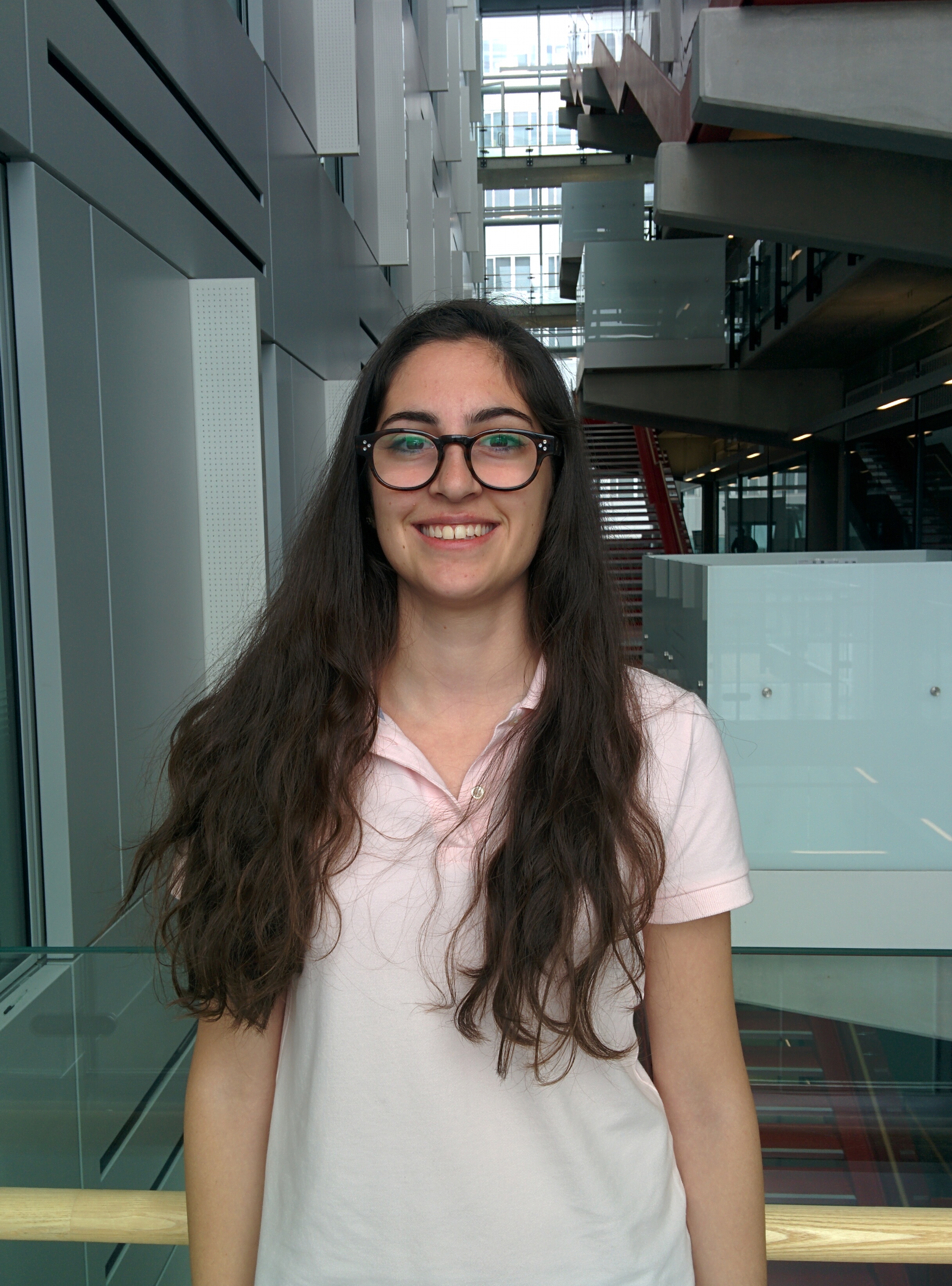By Helen Figueira
July 25, 2016
Time to read: 4 minutes

By Honor Pollard
From videos of worms, to proof reading our genetic code, to telling the world about the cutting-edge work of the institute, the CSC’s summer students have their pipettes and pens at the ready for a busy eight weeks.
George, supervised by David Rueda, is using single-molecule imaging to investigate the proof-reading role of DNA Polymerase III (an enzyme used to copy and correct DNA). George aims to find out if the type of mistake changes the ability of the enzyme to correct the errors. Having used similar imaging techniques before, George has some experience with the specialist equipment he will be using. During his eight-week stay, George would like to improve the precision of his laboratory techniques.
Kara is working in the Nitric Oxide Signalling group. She is looking at the ins and outs of nitric oxide regulation, particularly the different inhibitors in the pathway. She was inspired to work on enzyme inhibitors by her favourite experiment at university. “That’s what I love about biology; as long as you understand the background theory you can apply it to any signalling pathway in any biological system” says Kara.
Lorenz is supervised by PhD student Tim Davies and is imaging an area of the brain where, unusually, new brain cells grow in adults. He has not studied neurobiology before and is eager to get to grips with the field. The studentship is an opportunity for Lorenz to further his practical experience beyond the university curriculum. He is keen to learn how to use equipment, such as confocal microscopy, which so far he has only read about in textbooks. Lorenz believes his stay will confirm his interest in a research-based career.
Oana’s project focuses on improving procedures with RNA isolation and stability. RNA is used as a messenger, the collective name for all the messenger RNA molecules in a cell is the transcriptome. The method Oana is working on is intended to serve as a platform for large-scale analysis of these messenger RNAs. “This will enable us to answer contemporary questions in the field of single cell transcriptomics”. Oana has a passion for research and is excited to be doing some cutting edge work: “RNA sequencing is a hot topic nowadays.”
Neil is working in the Behavioural Genomics group to analyse videos of zebrafish, which are used as a model organism in biology. “I’m interested in using software for research as it allows the automation of complex tasks that would be impractical to do at scale otherwise.” He hopes to learn more about the work being done at the CSC.
This year sees a new studentship in Science Communications. Honor will be working with Susan Watts, the CSC’s head of communications and public engagement, on a variety of tasks, including writing news articles for the MRC CSC website. “Scientific communication is clearly very important, I’m looking forward to engaging with a wide range of scientists and talking about their latest work”. Honor, who is studying biological sciences, wants to improve the quality of her scientific writing and ability to condense complicated topics into short, accessible articles.
Fu Xiang, a recent biotechnology graduate, is undertaking a research project in imaging analysis. He will be writing computer code to track the egg-laying frequency of the C. elegans roundworm. He has previously analysed photographs of these animals and with a years’ programming experience Fu Xiang will be extending his skills to the use of video. Fu Xiang will have to work with a huge amount of data. He hopes this ambitious project will improve his coding capabilities and prepare him for career in image processing.
 Elena (left) is building on her previous lab experience by using cloning techniques to investigate histones, which are protein-making molecules. Her team will be transferring the genes for histones from Archaea to bacteria and looking at the effects. Archaea have unique biochemistry compared to bacteria so the team is interested to see whether their histones are still compatible. Elena is keen to immerse herself in a research environment and sees herself studying for a PhD in the not so distant future.
Elena (left) is building on her previous lab experience by using cloning techniques to investigate histones, which are protein-making molecules. Her team will be transferring the genes for histones from Archaea to bacteria and looking at the effects. Archaea have unique biochemistry compared to bacteria so the team is interested to see whether their histones are still compatible. Elena is keen to immerse herself in a research environment and sees herself studying for a PhD in the not so distant future.
At the end of their placement the students will be giving presentations on their findings and experience in the LMS Seminar Room on Friday 26th of August.